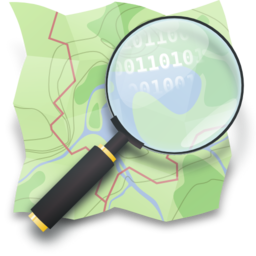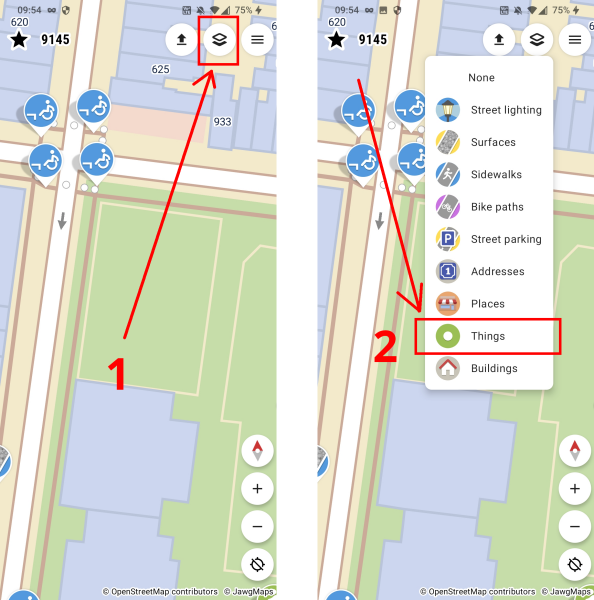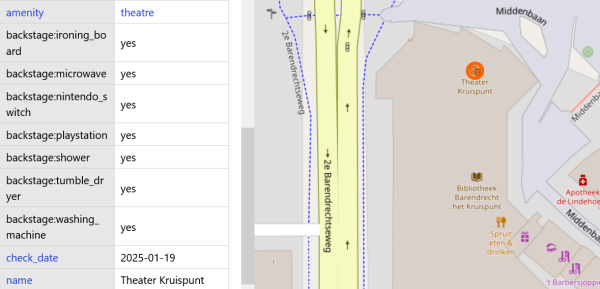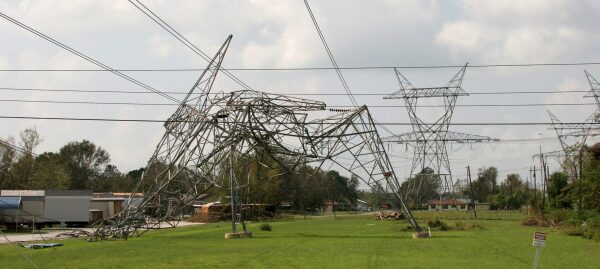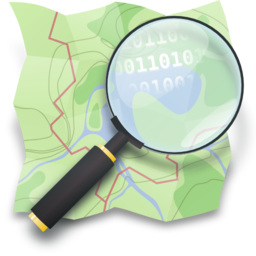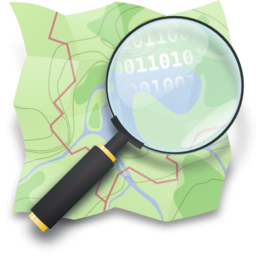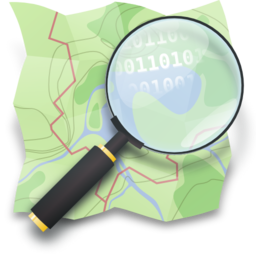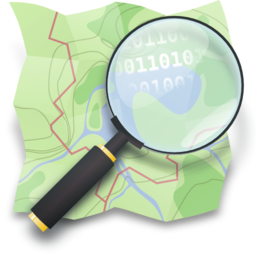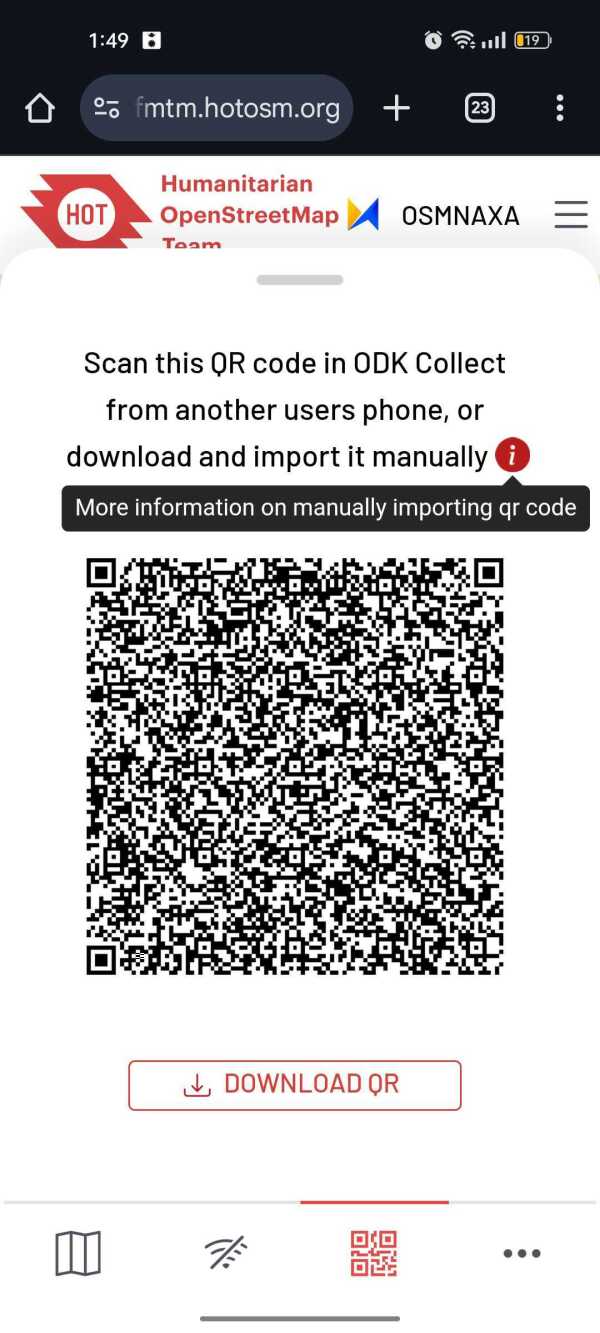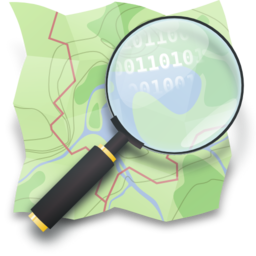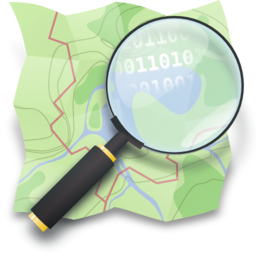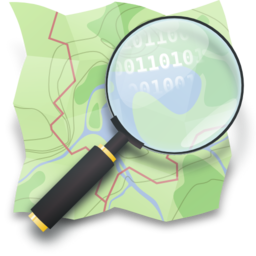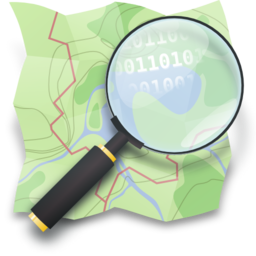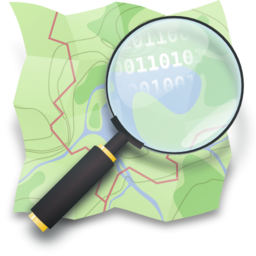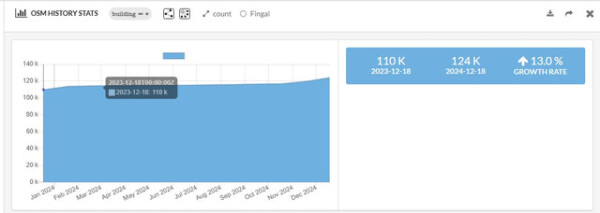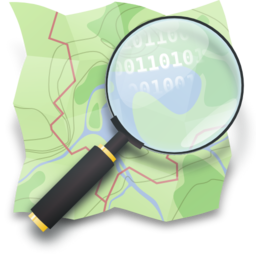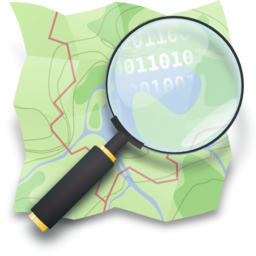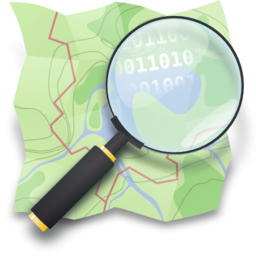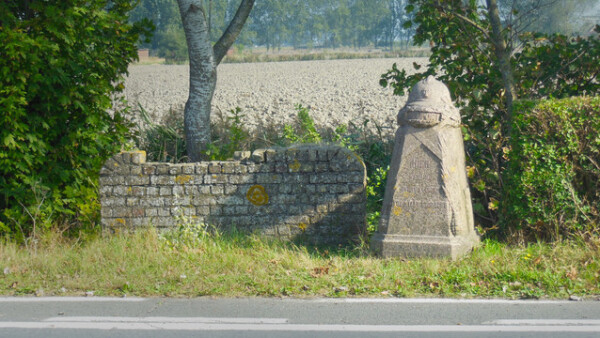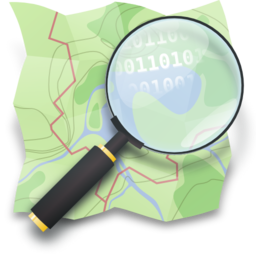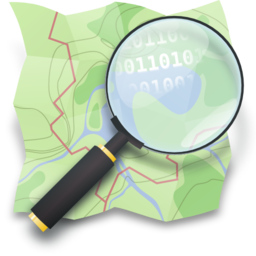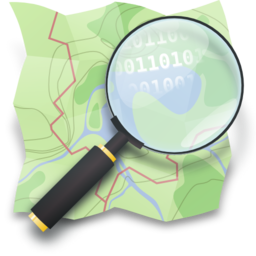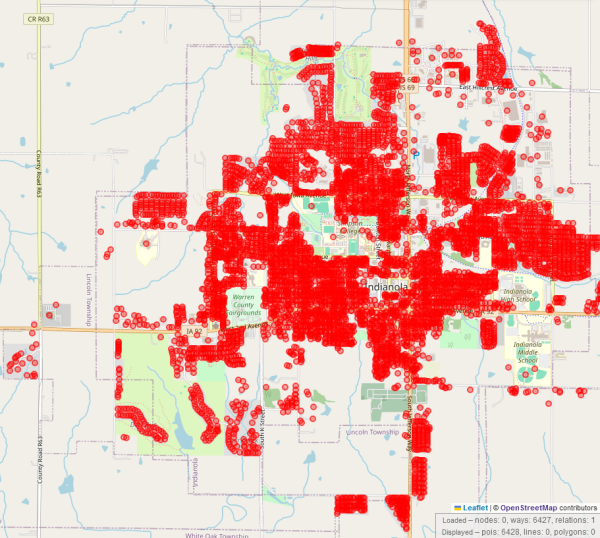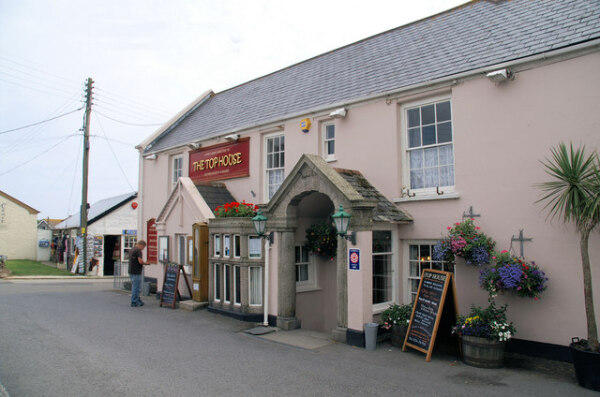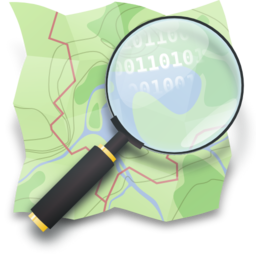Last time i was in the city, went for coffee and made a post here about it. Now i dont see any post
In the upper-right corner of the main screen, youll see 3 buttons:
Since last Thursday, Im touring the Netherlands with the band Im in. I brought the GoPro Max sponsored by Meta, because I thought it would be a great opportunity to get lots of footage for Panoramax which has little coverage in the Netherlands so far…
OpenStreetMap is now 20 years old. Its community is contributing to complete a geographical database which fuel many activities, for instance useful for energy transition and power grids asset management.
Hello, I was wondering if there was a way to make your own personal edits to the OSM without sending it to the server.
# 64 NPC Area B Street,GSIS Hills Subdivision,Talipapa Barangay 164, Caloocan City, Metro Manila Philippines, 1400
# 64 NPC Area B Street,GSIS Hills Subdivision,Talipapa Barangay 164, Caloocan City, Metro Manila Philippines, 1400
# 64 NPC Area B Street,GSIS Hills Subdivision,Talipapa Barangay 164, Caloocan City, Metro Manila Philippines, 1400
For years, an issue with Kurdish language, Arabic script, and OpenStreetMap tiles has been on my radar. In 2023 I got OSM to update Noto fonts on the tile server, but Google has moved their latest changes to individual repos.
so the beach town is seeing growth again, after the primary developers went bust in 2007/8. A large amount of blank land between the shops and the harbour has been cleared, and given asphalt roads, concrete footpaths, and brackish ponds for the mosquitoes to grow in! I hope the new holiday home owners like mosquitoes!
My GPS accuracy is not great and my note taking while walking is worse; but I’ve drawn some new ways on the new footpaths; and verified some of the existing paths from Kenwood Drive to Waimarie Ave are still approximately where my GPS says they are. Good fun.
Need to go back with a laptop next summer to add/tweak more. Hopefully LINZ has updated by then to provide even better coverage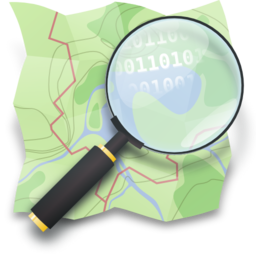
My GPS accuracy is not great and my note taking while walking is worse; but I’ve drawn some new ways on the new footpaths; and verified some of the existing paths from Kenwood Drive to Waimarie Ave are still approximately where my GPS says they are. Good fun.
Need to go back with a laptop next summer to add/tweak more. Hopefully LINZ has updated by then to provide even better coverage

Matarangi Beach returns
so the beach town is seeing growth again, after the primary developers went bust in 2007/8. A large amount of blank land between the shops and the harbour has been cleared, and given asphalt roads, concrete footpaths, and brackish ponds for the mosqu…OpenStreetMap
The State of the Map Asia 2024 conference wasn’t held in a main travelers’ hub like Thailand but rather chose a much, not that well-known country Bangladesh, and its previously unsettled political situation, which ended with the Prime Minster fleeing to India. Summarizing all these factors might discourage most people from visiting this country, ended up most of the attendees are domestic, and plus someone like me who is a foreigner is lucky enough to obtain a VISA to pay a visit.
Bangladesh is a young country, during the conference we saw many attendees were students, who might help those international aid projects to gather map data. We can see teachers bring their students to attend the conference. And there are also various student clubs, like all Youthmappers in Bangladesh, publishing their project results. One day we might see when the country is prosperous, and students grown up, there is a chance that they will map shops and buildings in the city where they live.
I want to write something about the general participant situation here in the Asia Pacific area. In developed countries like Taiwan, there are individuals who launch interest groups to map specific map features or netizens with enough motive to contribute to OpenStreetMap project. There are other countries that rely on aid projects to map local map data, and sometimes there are sone who will map modern map features. I have heard a talk about solar pannels in Dahka.
The State of the Map Asia splits its session into quite strange 10-minute parts. I accidentally submitted two talks, and did not get rejected. I had to give a talk on the first and second day, one I introduced the community in Taiwan, and the other day I introduced some interesting projects hosted by individual mappers.
I almost can’t fly into Dahka due to the immigration office having some questions about my visit. Finally, the host came to the airport to rescue me and took the connecting flight to Cox’s Bazar. Besides the conference, I had a walk every day on the beach, listening to the sound of the waves of the Indian Ocean. When I recalled the memory of my Bangladesh trip, there was a challenge to get a VISA on arrival. I take the chance to visit Bangladesh when attending a conference and add Bangladesh to the list of South Asia countries.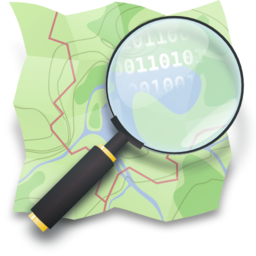
Bangladesh is a young country, during the conference we saw many attendees were students, who might help those international aid projects to gather map data. We can see teachers bring their students to attend the conference. And there are also various student clubs, like all Youthmappers in Bangladesh, publishing their project results. One day we might see when the country is prosperous, and students grown up, there is a chance that they will map shops and buildings in the city where they live.
I want to write something about the general participant situation here in the Asia Pacific area. In developed countries like Taiwan, there are individuals who launch interest groups to map specific map features or netizens with enough motive to contribute to OpenStreetMap project. There are other countries that rely on aid projects to map local map data, and sometimes there are sone who will map modern map features. I have heard a talk about solar pannels in Dahka.
The State of the Map Asia splits its session into quite strange 10-minute parts. I accidentally submitted two talks, and did not get rejected. I had to give a talk on the first and second day, one I introduced the community in Taiwan, and the other day I introduced some interesting projects hosted by individual mappers.
I almost can’t fly into Dahka due to the immigration office having some questions about my visit. Finally, the host came to the airport to rescue me and took the connecting flight to Cox’s Bazar. Besides the conference, I had a walk every day on the beach, listening to the sound of the waves of the Indian Ocean. When I recalled the memory of my Bangladesh trip, there was a challenge to get a VISA on arrival. I take the chance to visit Bangladesh when attending a conference and add Bangladesh to the list of South Asia countries.

The Journary of State of the Map Asia 2024
The State of the Map Asia 2024 conference wasnt held in a main travelers hub like Thailand but rather chose a much, not that well-known country Bangladesh, and its previously unsettled political situation, which ended with the Prime Minster fleeing t…OpenStreetMap
Had to move the summit as it was in a random place. It’s really cool up there.
Revolutionizing Field Mapping (with FMTM): Part 4
Look no further than EcoTerra Costa Rica! Our top tours are designed to take you to the most popular tourist destinations in Arenal, while also providing unique and authentic experiences that you won’t find anywhere else. Book your tour with EcoTerra Costa Rica today and experience the best that La Fortuna has to offer! With our knowledgeable guides, comfortable transportation, and unbeatable prices, you’re sure to have an unforgettable vacation.
At Milano Sydney Roof Painting we specialize in painting roofs in Sydney which aims at providing you with the best out of your building in terms of utility and aesthetics. We are committed to delivering excellent service and customer satisfaction in roofing services that will ensure your roof is in good shape.
Hey hey. We at the Yerevan Tree Map project were pulling to our database new nodes tagged as 
natural=tree for a while now, without actually pushing changes back. Now we are starting to do so. The OSM API is not quite straightforward, so we’re learning on the go. We have some 4k plus trees to push, we’ll be adding them in small batches. Later we’ll start pushing updates to existing tree nodes (e.g. when someone measures the tree or updates its state).
Testing data upload
Hey hey. We at the Yerevan Tree Map project were pulling to our database new nodes tagged as for a while now, without actually pushing changes back. Now we are starting to do so.OpenStreetMap
OSM data in English, but also in French, accessible in IFL for French-speaking countries in the South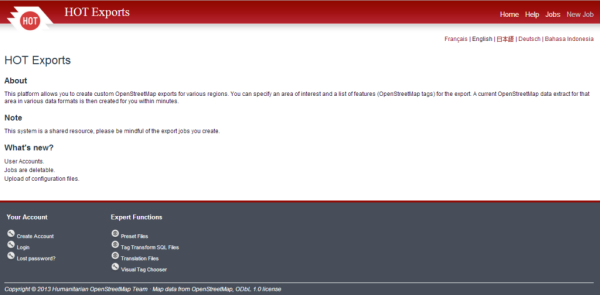

OSM data in English, but also in French, accessible in IFL for French-speaking countries in the South
(English below, thanks to Deepl.com)OpenStreetMap
I just discovered https://github.com/openstreetmap/tile-attribution
And it seems like a great way to get involved with openstreetmap via GitHub - It doesnt require any coding ability, one would need an active GitHub acount to add an issue to the issu…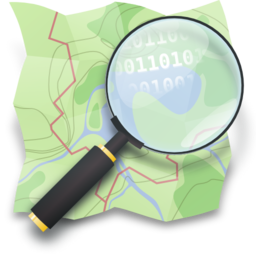
And it seems like a great way to get involved with openstreetmap via GitHub - It doesnt require any coding ability, one would need an active GitHub acount to add an issue to the issu…

I posted about tile-attribution to gather support for OpenStreetMap!
I just discovered https://github.com/openstreetmap/tile-attribution And it seems like a great way to get involved with openstreetmap via GitHub - It doesnt require any coding ability, one would need an active GitHub acount to add an issue to the issu…OpenStreetMap
HIII!!! happy new year! i’ve decided to try an maintain a editing streak for the entirety of 2025 and it’s going pretty well (at time of writing i’ve edited daily since december 25th of 2024)! nothing much aside from that i just try to use streetcomplete when bored lol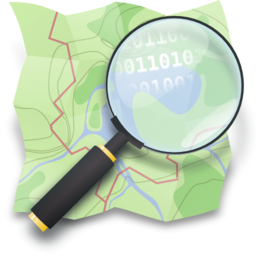

diorey 4
HIII!!! happy new year! ive decided to try an maintain a editing streak for the entirety of 2025 and its going pretty well (at time of writing ive edited daily since december 25th of 2024)! nothing much aside from that i just try to use streetcomplet…OpenStreetMap
Starting the new year with milestone achievements! In this 22nd development update, were excited to present comprehensive mobile support improvements across OpenStreetMap-NG.
OpenStreetMap NextGen Development Diary #22 — Mobile Support
Nodes that is, I’ ve set, dragged, deleted as at yesterday and the 2 days downtime broke the 1500+ days series of uninterrupted mapping. Here’s to the next.
As time passes I am delving further into the discovery that I outlined here, and contextualised a little more here and all relating to the Fingal task set up by myself and the osm community three years ago.
Since yesterday, weve updated our Map of Mithraea using OpenStreetMap and Leaflet – and were quite pleased with the result!
On the 22nd and 23rd of November 2024, I visited the Ho Technical University (HTU) YouthMappers chapter for an exciting two-day program sponsored by OSM Ghana.
Im deleting OSM node 151352138 which was place=hamlet name=Dominion within the city of Longmont, CO (at 40.1430404, -105.1269286)
Local languages of openstreetmap
Earlier today I OSM-stumbled upon a stele marking the western front line of the First World War in Belgium and France. In Dutch we apparently call them demarcatiepalen, a term which I find amusingly technical sounding.
This last 5 years I have been faced with a terrifyingly real and all consuming gang stalking problem (concept which I didn’t even fully believe in until at the grips of it myself), bringing with it cognitive dissonance, dissociation and confusion through gas-lighting, bullying, financial and emotional abuse by those who are supposed to be closest to me.
By deliberately noticing everything it encompasses, and by thoroughly researching each of it’s composing elements to be able to represent them with as much fidelity as possible, I hope to regain some sense of direction and purpose and find refuge from stagnancy, isolation and depression.
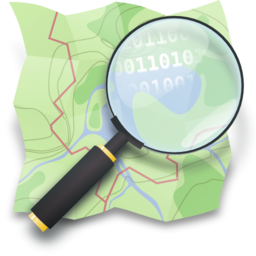
it feels like I have lost all sense of footing; like solid ground could very well turn out to have been ocean this whole time and it would not be all that shocking.My participation in this project is an attempt to help me reconnect with myself and my surroundings
By deliberately noticing everything it encompasses, and by thoroughly researching each of it’s composing elements to be able to represent them with as much fidelity as possible, I hope to regain some sense of direction and purpose and find refuge from stagnancy, isolation and depression.
Hi, my name is Joh,
and I will stand strong and make best of this, and every situation.
I shall bend not break,
I shall be,
Because I have as much right to do so as everyone else.
finding my footing
This last 5 years I have been faced with a terrifyingly real and all consuming gang stalking problem (concept which I didnt even fully believe in until at the grips of it myself), bringing with it cognitive dissonance, dissociation and confusion thro…OpenStreetMap
This is the developers diary concerning the fifth year of the damn project the project that helps mappers by dividing a big area into smaller planar shapes that people can map together.
2024…I’ve learned a lot of things…
- I mapped some trees at my university.
- I love nature! So I helped @Ludway map his school with some kids. There, I practiced my knowledge of trees and species. I learned how to measure a tree! Also, I learned about some botanical things.
- I mapped my neighborhood and learned how to map buildings, shops, paths, etc.
- Now I’m envolved in YouthMappers, and I’m very proud of that.
- I met amazing people like @AngocA, @JuanMelo and @Isbravoc, who have taught me many things.
It has been a productive year for me on osm yet I am still reaching for a more comprehensive map of both Anchorage and greater Alaska.
This year I continued to map large swathes of natural features in Alaska. It is still very much an open canvas to add features and without even a goal in mind it has been easy and quick to add large areas in small osm breaks throughout the day in 2024. Corollary studies published this year on the prevalence of Alzheimer’s based on occupation points to reduces occurrences with jobs requiring constant active direction finding (ambulance drivers and taxi drivers in particular). It’s been hypothesized this is from activation or stimulation of the hippocampus. That’s something I imagine I can trigger to some degree with mapping that I wouldn’t get from my typical computer work. I feel as though osm is keeping my brain sharp at least.
And while the blank canvas of Alaska is a very freeing, It can be slightly frustrating that the audience for these remote areas are close to zero. To attract a larger audience, I have a plan for 2025. What really needs doing is the large natural feature additions where they can be viewed at the lower zoom levels. The natural goal for me then is some continuous line that would be interesting to see for viewers of Alaska between zooms around 6 or 7. It would be a thin line, since the distance is vast but the perfect goal would also attract help from other users as well I believe. With these considerations in mind, my goal for 2025 is to create a continuous line of natural features along the famous Alaska Iditarod Dog Sled Race. It garners more international attention then maybe any other Alaska specialty other than salmon. The race is approximately a round 1000 miles (1600 km) which fits within a stretch goal for a year I believe. Since this is still a very large goal, even as a very thin line, I will tip my toe into the community a little more to see where I can pick up edits on this goal from the international community.
The overpass turbo API within R is exceptional. The workflow is fast between edits, API call, and resulting table or leaflet map. I am continuing to play with the possibilities of this like I have written before in previous journal entries beyond basic mapping. It scratched my itch for studying infrastructure both locally and far away. Of course, while only the mapped information is accessible, all sorts of informal questions I come up with from reading the news become easy querys. What’s the pipeline infrastructure of the permian basin look like? Where are the military installations within China? These are quick and answerable questions! It’s nuts this isn’t utilized more.
Taking this as my supposition, how then should I focus my attention for 2025 instead of following my curiosity? Not that there’s anything wrong with that though.
Well for this coming year, I think that I would very much like to find the right workflow to making my questions and answers more public. I’m going to make a public website to host these leaflet maps I make for myself with more of the story behind my interests. This could look like showing local combustion car infrastructure across localities (gas stations, dealerships, mechanics, etc.) given the general interest in electric vehicles or something like a regional map satellite Smithsonian museums. I will have to wait to see what moves me (and most importantly, commit to hosting my work outside this journal.
2024 has included a full survey of Anchorage places of worship including contact information where I can find it. I have hope in 2025 to fill in the address information and export this information to make a kind of local directory of places of worship in Adobe InDesign with a map to accompany it with indexed locations. If my goal is achieved, I think then it would be a low labor path to produce more directories with local businesses, schools, etc. utilizing the osm database with the overpass api. I haven’t seen anyone else do this to what I would consider a finished product and while the scale of Anchorage is fairly small compared to other large metros, this would be a great way to expand the scope for how osm data could be used.
Happy 2025!
Mapping Natural Features
This year I continued to map large swathes of natural features in Alaska. It is still very much an open canvas to add features and without even a goal in mind it has been easy and quick to add large areas in small osm breaks throughout the day in 2024. Corollary studies published this year on the prevalence of Alzheimer’s based on occupation points to reduces occurrences with jobs requiring constant active direction finding (ambulance drivers and taxi drivers in particular). It’s been hypothesized this is from activation or stimulation of the hippocampus. That’s something I imagine I can trigger to some degree with mapping that I wouldn’t get from my typical computer work. I feel as though osm is keeping my brain sharp at least.
My First 2025 Goal
And while the blank canvas of Alaska is a very freeing, It can be slightly frustrating that the audience for these remote areas are close to zero. To attract a larger audience, I have a plan for 2025. What really needs doing is the large natural feature additions where they can be viewed at the lower zoom levels. The natural goal for me then is some continuous line that would be interesting to see for viewers of Alaska between zooms around 6 or 7. It would be a thin line, since the distance is vast but the perfect goal would also attract help from other users as well I believe. With these considerations in mind, my goal for 2025 is to create a continuous line of natural features along the famous Alaska Iditarod Dog Sled Race. It garners more international attention then maybe any other Alaska specialty other than salmon. The race is approximately a round 1000 miles (1600 km) which fits within a stretch goal for a year I believe. Since this is still a very large goal, even as a very thin line, I will tip my toe into the community a little more to see where I can pick up edits on this goal from the international community.
My Second 2025 Goal
The overpass turbo API within R is exceptional. The workflow is fast between edits, API call, and resulting table or leaflet map. I am continuing to play with the possibilities of this like I have written before in previous journal entries beyond basic mapping. It scratched my itch for studying infrastructure both locally and far away. Of course, while only the mapped information is accessible, all sorts of informal questions I come up with from reading the news become easy querys. What’s the pipeline infrastructure of the permian basin look like? Where are the military installations within China? These are quick and answerable questions! It’s nuts this isn’t utilized more.
Taking this as my supposition, how then should I focus my attention for 2025 instead of following my curiosity? Not that there’s anything wrong with that though.
Well for this coming year, I think that I would very much like to find the right workflow to making my questions and answers more public. I’m going to make a public website to host these leaflet maps I make for myself with more of the story behind my interests. This could look like showing local combustion car infrastructure across localities (gas stations, dealerships, mechanics, etc.) given the general interest in electric vehicles or something like a regional map satellite Smithsonian museums. I will have to wait to see what moves me (and most importantly, commit to hosting my work outside this journal.
My Third 2025 Goal
2024 has included a full survey of Anchorage places of worship including contact information where I can find it. I have hope in 2025 to fill in the address information and export this information to make a kind of local directory of places of worship in Adobe InDesign with a map to accompany it with indexed locations. If my goal is achieved, I think then it would be a low labor path to produce more directories with local businesses, schools, etc. utilizing the osm database with the overpass api. I haven’t seen anyone else do this to what I would consider a finished product and while the scale of Anchorage is fairly small compared to other large metros, this would be a great way to expand the scope for how osm data could be used.
Happy 2025!
# My Experience Mapping Trees With High School Students at Instituto Técnico Industrial Francisco José de Caldas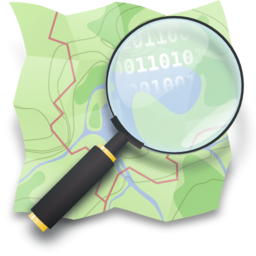

# My Experience Mapping Trees With High School Students at Instituto Técnico Industrial Francisco José de Caldas
OpenStreetMap is a map of the world, created by people like you and free to use under an open license.OpenStreetMap
As I wrote some time ago, I started mapping (remotely) in Indianola, Iowa. I have now reached completion (as complete as it can be with the imagery available) with buildings and added more street furniture, minor etc.
Well over a year ago I extracted all the objects for Great Britain. Nearly 860 keys are used across all the elements.
📅 Date: November 30th - December 1st, 2024
🌍 Location: Cox’s Bazar, Bangladesh
🏷️ Hashtags: #SotM2024 #OMGuru #YouthMappers #EasternUniversity #OSM #MappingForChange #GeospatialRevolution
🌍 𝔸 𝕁𝕠𝕦𝕣𝕟𝕖𝕪 𝕠𝕗 𝕀𝕟𝕟𝕠𝕧𝕒𝕥𝕚𝕠𝕟, ℂ𝕠𝕝𝕝𝕒𝕓𝕠𝕣𝕒𝕥𝕚𝕠𝕟, 𝕒𝕟𝕕 ℂ𝕠𝕟𝕟𝕖𝕔𝕥𝕚𝕠𝕟
The…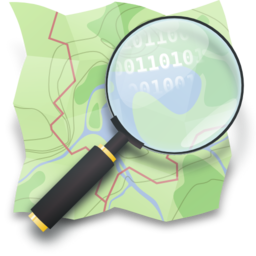
🌍 Location: Cox’s Bazar, Bangladesh
🏷️ Hashtags: #SotM2024 #OMGuru #YouthMappers #EasternUniversity #OSM #MappingForChange #GeospatialRevolution
🌍 𝔸 𝕁𝕠𝕦𝕣𝕟𝕖𝕪 𝕠𝕗 𝕀𝕟𝕟𝕠𝕧𝕒𝕥𝕚𝕠𝕟, ℂ𝕠𝕝𝕝𝕒𝕓𝕠𝕣𝕒𝕥𝕚𝕠𝕟, 𝕒𝕟𝕕 ℂ𝕠𝕟𝕟𝕖𝕔𝕥𝕚𝕠𝕟
The…

𝑼𝒏𝒊𝒕𝒆, 𝑰𝒏𝒔𝒑𝒊𝒓𝒆, 𝑰𝒏𝒏𝒐𝒗𝒂𝒕𝒆: 𝑴𝒚 𝑻𝒓𝒂𝒏𝒔𝒇𝒐𝒓𝒎𝒂𝒕𝒊𝒗𝒆 𝑱𝒐𝒖𝒓𝒏𝒆𝒚 𝒂𝒕 𝑺𝒕𝒂𝒕𝒆 𝒐𝒇 𝒕𝒉𝒆 𝑴𝒂𝒑 𝑨𝒔𝒊𝒂 2024
📅 Date: November 30th - December 1st, 2024 🌍 Location: Cox’s Bazar, Bangladesh 🏷️ Hashtags: #SotM2024 #OMGuru #YouthMappers #EasternUniversity #OSM #MappingForChange #GeospatialRevolution 🌍 𝔸 𝕁𝕠𝕦𝕣𝕟𝕖𝕪 𝕠𝕗 𝕀𝕟𝕟𝕠𝕧𝕒𝕥𝕚𝕠𝕟, ℂ𝕠𝕝𝕝𝕒𝕓𝕠𝕣𝕒𝕥𝕚𝕠𝕟, 𝕒𝕟𝕕 ℂ𝕠𝕟𝕟𝕖𝕔𝕥𝕚𝕠𝕟 The…OpenStreetMap
The Health Benefits of Editing OpenStreetMap (Made by AI)
Engaging in OpenStreetMap (OSM) editing is not just a hobby for geography enthusiasts—it is a multifaceted activity that provides numerous health benefits. From mental stimulation to physical activity, the act of mapping offers opportunities to enhance overall well-being in surprising ways.
One of the primary mental benefits of editing OSM is improved cognitive function. Mapping tasks require problem-solving, attention to detail, and spatial reasoning, all of which help sharpen the mind. Additionally, OSM editing fosters a sense of achievement and purpose. Completing map edits, especially those that contribute to disaster relief or accessibility, can boost self-esteem and provide emotional satisfaction. This altruistic aspect of OSM offers a unique source of fulfillment, as contributors know their work directly benefits communities worldwide.
Editing OSM also serves as a form of stress relief. The focused and repetitive nature of mapping encourages mindfulness, helping to calm the mind and reduce anxiety. By offering a meaningful distraction from daily worries, it can become a therapeutic activity. Moreover, participating in the global OSM community provides opportunities for social interaction, whether through online forums or collaborative mapping events. These connections can alleviate feelings of isolation and enhance mental well-being.
On a physical level, OSM editing often involves outdoor exploration, such as verifying map data through fieldwork. Activities like walking or cycling to map areas promote cardiovascular health, improve fitness, and provide an enjoyable way to engage with nature. For those working primarily indoors, field mapping offers a refreshing break from sedentary routines, benefiting posture, reducing eye strain, and encouraging movement.
Finally, OSM editing encourages lifelong learning. Contributors continually acquire new skills, from mastering mapping software to understanding geographic trends and urban planning. This mental engagement keeps the brain agile and adaptable, supporting long-term cognitive health.
In conclusion, editing OpenStreetMap is a rewarding activity with wide-ranging health benefits. It sharpens the mind, nurtures emotional well-being, promotes physical activity, and connects individuals to a global community. By contributing to a cause that impacts people worldwide, OSM editing exemplifies how a simple hobby can significantly enhance personal health and happiness.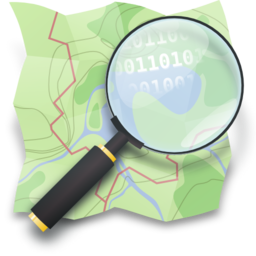
Engaging in OpenStreetMap (OSM) editing is not just a hobby for geography enthusiasts—it is a multifaceted activity that provides numerous health benefits. From mental stimulation to physical activity, the act of mapping offers opportunities to enhance overall well-being in surprising ways.
One of the primary mental benefits of editing OSM is improved cognitive function. Mapping tasks require problem-solving, attention to detail, and spatial reasoning, all of which help sharpen the mind. Additionally, OSM editing fosters a sense of achievement and purpose. Completing map edits, especially those that contribute to disaster relief or accessibility, can boost self-esteem and provide emotional satisfaction. This altruistic aspect of OSM offers a unique source of fulfillment, as contributors know their work directly benefits communities worldwide.
Editing OSM also serves as a form of stress relief. The focused and repetitive nature of mapping encourages mindfulness, helping to calm the mind and reduce anxiety. By offering a meaningful distraction from daily worries, it can become a therapeutic activity. Moreover, participating in the global OSM community provides opportunities for social interaction, whether through online forums or collaborative mapping events. These connections can alleviate feelings of isolation and enhance mental well-being.
On a physical level, OSM editing often involves outdoor exploration, such as verifying map data through fieldwork. Activities like walking or cycling to map areas promote cardiovascular health, improve fitness, and provide an enjoyable way to engage with nature. For those working primarily indoors, field mapping offers a refreshing break from sedentary routines, benefiting posture, reducing eye strain, and encouraging movement.
Finally, OSM editing encourages lifelong learning. Contributors continually acquire new skills, from mastering mapping software to understanding geographic trends and urban planning. This mental engagement keeps the brain agile and adaptable, supporting long-term cognitive health.
In conclusion, editing OpenStreetMap is a rewarding activity with wide-ranging health benefits. It sharpens the mind, nurtures emotional well-being, promotes physical activity, and connects individuals to a global community. By contributing to a cause that impacts people worldwide, OSM editing exemplifies how a simple hobby can significantly enhance personal health and happiness.

The health benefits of editing OSM (Made by AI)
The Health Benefits of Editing OpenStreetMap (Made by AI)OpenStreetMap
A few years ago I started working to make my town, Glenrothes, more visible on the Open Street Map. Mostly it was just roads and land use imported from public data, though a few people had added in some housing areas, addresses, and point of interest. I have steadily been adding all the missing buildings, shops, addresses, other missing POIs and cleaning up major land use blocks.
It is far from perfect, but things are in a much better state than they were a few years ago. But there are still a few areas where data needs to be added. If possible, it would be nice to address these in the coming year:
I mostly use StreetComplete for surveying, and that has had quite a few updates this year, making it ever easier to use. This year I discovered the Rapid editor which is really useful for adding data to unmapped areas in other parts of Scotland.
I hope all the OSM mappers had a good 2024, and wishing you a good 2025, too!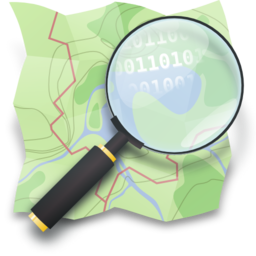
It is far from perfect, but things are in a much better state than they were a few years ago. But there are still a few areas where data needs to be added. If possible, it would be nice to address these in the coming year:
- Finish adding the remaining missing addresses - There are a lot of neighbourhoods still missing address data. The UK’s PAF still hasn’t been released under open license, so these will need to be surveyed and added manually. In clockwise order: Collydean, Pitcairn, Balfarg, Cadham, Markinch, Thornton, Stenton, Caskieberran, Stenton, and Leslie. I want to be accurate though, and the layouts of houses in same areas can be difficult to navigate, so it may take some time.
- More details for POIs like shop opening hours - Locations on the OSM can have additional metadata like contact details, opening hours, whether they are disabled accessible, and things like types of menu for restaurants. Some of this info is made available on websites, some of it may need direct surveying.
- There are lots of construction areas around town that will need to be surveyed when they are complete. New buildings and POIs to be added. The town park is also being upgraded and when it is finished next year there may be lots of changes to update, like new paths and play areas. Some of these changes have already been updated.
I mostly use StreetComplete for surveying, and that has had quite a few updates this year, making it ever easier to use. This year I discovered the Rapid editor which is really useful for adding data to unmapped areas in other parts of Scotland.
I hope all the OSM mappers had a good 2024, and wishing you a good 2025, too!

Open Street Map Goals for 2025
A few years ago I started working to make my town, Glenrothes, more visible on the Open Street Map. Mostly it was just roads and land use imported from public data, though a few people had added in some housing areas, addresses, and point of interest…OpenStreetMap
